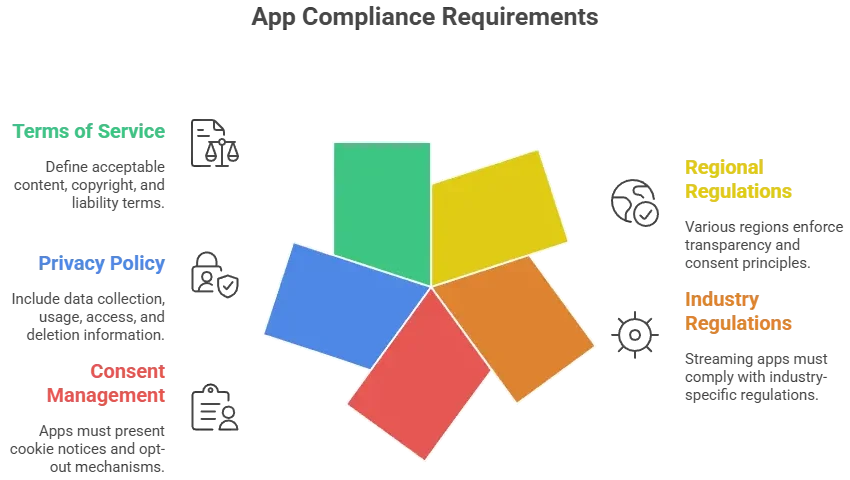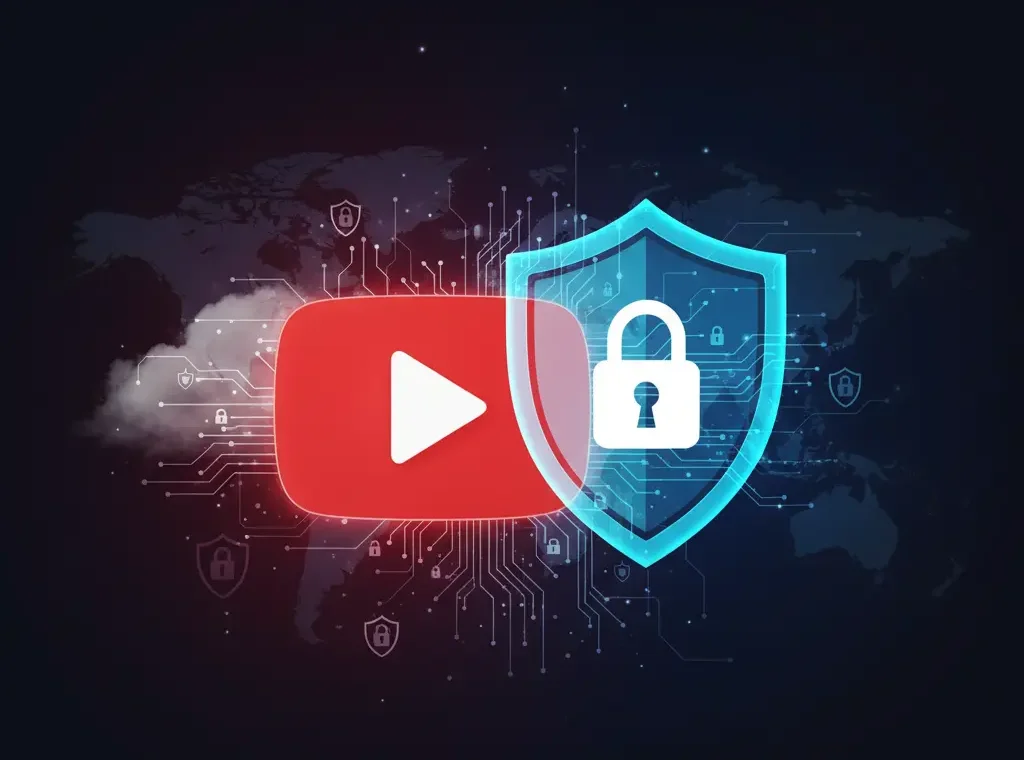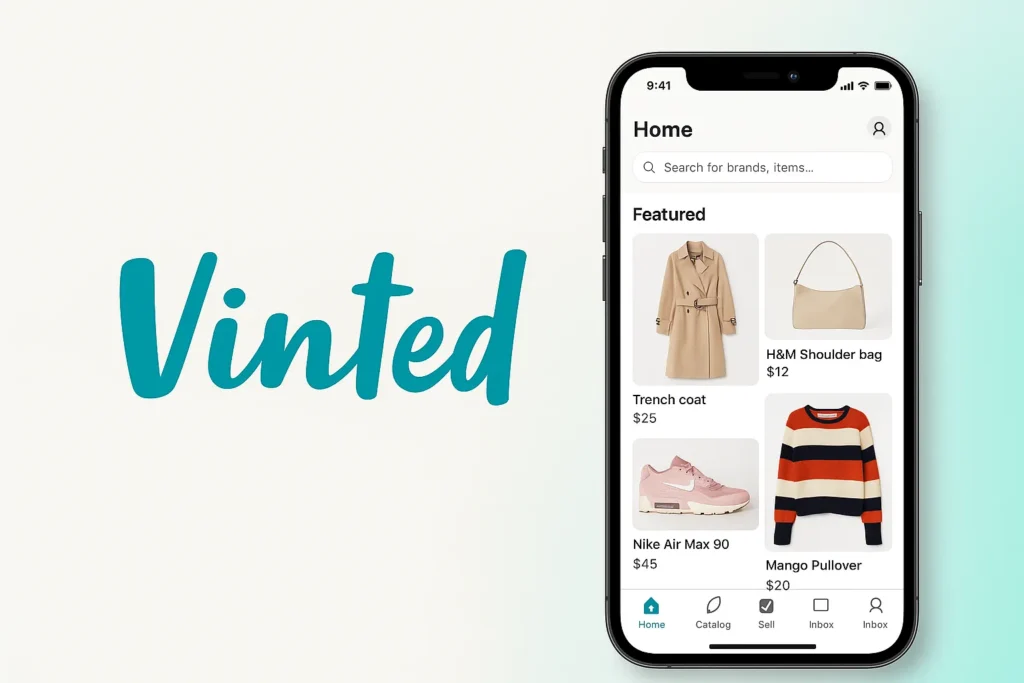You’ve heard the horror stories — data breaches, content leaks, and hacked video platforms exposing millions of users’ private data. For anyone planning to launch a video-sharing app inspired by YouTube, security isn’t just a technical detail — it’s the foundation of trust.
In 2025, as white-label YouTube apps surge in popularity among creators, media startups, and OTT brands, the question “Is my app safe?” matters more than ever. From user authentication to video streaming integrity, a single flaw could mean lost revenue, reputational damage, or even legal penalties.
This guide provides an honest, research-backed look into how secure white-label YouTube apps really are — and what steps you must take to safeguard users, content, and business compliance. We’ll break down common risks, evolving security standards, and how to identify a provider that truly prioritizes your app’s safety.
Understanding white-label YouTube app security landscape
A white-label YouTube app allows a business to launch its own video-sharing or streaming platform using pre-built source code. While this approach accelerates development and reduces cost, it also raises important questions about how security is managed behind the scenes.
What “white-label security” actually means
In a white-label app, the original developer (the provider) builds and maintains the codebase, while multiple brands customize and deploy it. Security, therefore, depends heavily on the provider’s architecture, update policy, and compliance standards. The buyer inherits both the strengths and the weaknesses of that codebase.

Wh y people worry about white-label apps
Buyers often have limited visibility into the backend, documentation, or server controls. Without transparency, it’s easy to assume shortcuts have been taken. In addition, inconsistent update cycles or lack of proper encryption practices from some vendors have contributed to distrust in the market.
Current threat landscape for YouTube-type platforms
Video-sharing platforms face unique challenges: copyright abuse, data leaks through CDN misconfiguration, account hijacking, and DDoS attacks on streaming servers. Reports from 2024–2025 show that over 37 % of media apps experienced at least one attempted intrusion linked to insecure APIs or weak authentication layers.
Security standards in 2025
Regulatory frameworks like GDPR, CCPA, and the upcoming EU Digital Services Act mandate stronger data governance for content platforms. Encryption standards such as AES-256, TLS 1.3, and secure OAuth 2.0 flows are now baseline requirements for compliance.
Real-world statistics
- 1 in 4 app breaches originate from unpatched third-party integrations.
- 63 % of users say they will delete an app permanently after a single data breach.
- Global average cost of a video-platform breach in 2025: USD 4.9 million.
A modern white-label YouTube app must therefore integrate security into every development layer — from code audits and encrypted video storage to compliance-driven data policies.
Read more : – Top YouTube Features Every App Builder Should Know
Key security risks and how to identify them
Even the most advanced white-label YouTube app can become a target if security fundamentals are ignored. Understanding where the real risks lie helps developers and business owners create stronger, compliance-ready protection frameworks.
Data protection and privacy risks
- User personal information: Every user’s login, email, and profile data must be stored using AES-256 encryption with secure access control. Poor encryption or exposed endpoints can lead to identity theft and account takeovers.
- Payment data security: If the app supports monetization or premium subscriptions, PCI DSS compliance is mandatory to safeguard transactions and prevent card data exposure.
- Location tracking concerns: Many video apps collect usage patterns and geolocation data; without explicit consent management, this can breach GDPR or CCPA laws.
- GDPR/CCPA compliance: Failing to provide clear user consent, data export, and deletion options can lead to severe regulatory penalties.
Technical vulnerabilities
- Code quality issues: Unverified open-source libraries or outdated SDKs can introduce malware or backdoors. Every line of inherited code must undergo static and dynamic testing.
- Server security gaps: Misconfigured servers, weak SSH keys, or unencrypted admin dashboards are often exploited for unauthorized access.
- API vulnerabilities: Insecure or undocumented APIs are the most common entry points for attackers in media apps. Rate limiting, token validation, and HTTPS enforcement are essential.
- Third-party integrations: Embedding analytics or ad modules without vetting their permissions can expose sensitive user data.
Business risks
- Legal liability: A data leak can lead to lawsuits, especially if the provider failed to disclose vulnerabilities.
- Reputation damage: Once users lose trust, recovering brand credibility is costly and time-consuming.
- Financial losses: Breach-related downtime and compensation claims can severely impact startup cash flow.
- Regulatory penalties: Non-compliance fines under GDPR can reach up to 4 % of annual global turnover.
Risk assessment checklist
- Is all user data encrypted in transit and at rest?
- Does the provider conduct regular penetration testing?
- Are all APIs documented and secured with authentication tokens?
- Is there a defined update and patch management policy?
- Are data retention and deletion processes GDPR-compliant?
- Does the app use secure payment gateways verified under PCI DSS?
- Are backup and disaster recovery plans tested regularly?
By addressing these key areas, you can transform your white-label YouTube app from a potential risk into a resilient, compliant digital asset.
Security standards your white-label YouTube app must meet
A secure white-label YouTube app isn’t defined by marketing promises but by adherence to globally recognized certifications and technical standards. These frameworks validate that the app and its infrastructure are resilient against threats, compliant with regulations, and aligned with modern data protection principles.
Essential certifications
- ISO 27001 compliance: Confirms that the provider follows an internationally recognized framework for information security management, covering policies, controls, and continuous improvement.
- SOC 2 Type II: Evaluates how well the app provider safeguards user data across security, availability, processing integrity, confidentiality, and privacy.
- GDPR compliance: Mandates transparent user consent, right to data deletion, and secure data handling within and outside the EU.
- HIPAA (if applicable): Needed if the platform deals with healthcare-related or wellness video content, ensuring confidentiality and integrity of health data.
- PCI DSS: Required for apps handling payment processing to secure transactions, protect cardholder data, and prevent financial fraud.
Technical requirements
- End-to-end encryption: Ensures all communication between users, creators, and servers is fully encrypted to prevent interception or tampering.
- Secure authentication (2FA/OAuth): Multi-factor authentication reduces the risk of unauthorized access and password breaches.
- Regular security audits: Scheduled third-party audits uncover vulnerabilities early and strengthen compliance posture.
- Penetration testing: Ethical hackers simulate attacks to expose weaknesses before real attackers can exploit them.
- SSL certificates: Provide encrypted data transfer between client and server, ensuring user privacy and trust.
- Secure API design: All APIs must enforce HTTPS, authentication tokens, and strict input validation to avoid injection or data exposure risks.
Security standards comparison table
| Security Framework | Purpose | Required For | Validity / Renewal |
|---|---|---|---|
| ISO 27001 | Global data protection & risk management | All data-driven apps | Annual review & 3-year renewal |
| SOC 2 Type II | Data integrity & availability audit | Cloud-hosted apps | 12-month renewal |
| GDPR | User data & consent protection | EU and international users | Continuous compliance |
| HIPAA | Health-related data security | Medical/wellness platforms | Annual audit |
| PCI DSS | Payment data protection | Subscription or e-commerce apps | Quarterly scans + annual validation |
By aligning your white-label YouTube app with these certifications, you not only ensure legal compliance but also strengthen user trust — a decisive factor for long-term retention and monetization.
Read more : – Top 5 Mistakes Startups Make When Building a YouTube Clone
Red flags — how to spot unsafe white-label providers
Not every white-label provider treats security as a top priority. Some focus solely on delivering a quick, low-cost product while neglecting crucial safeguards that protect user data and business integrity. Identifying early warning signs can save you from serious risks later.
- No security documentation: Providers who cannot share security policies, architecture details, or compliance reports likely lack structured protection protocols.
- Cheap pricing without explanation: Extremely low pricing can indicate compromised infrastructure, reused vulnerable code, or lack of regular updates.
- No compliance certifications: Absence of ISO, SOC 2, or PCI DSS certification should immediately raise concern about data-handling practices.
- Outdated technology stack: Older frameworks and unmaintained libraries often contain known vulnerabilities that attackers easily exploit.
- Poor code quality: Unstructured, untested, or non-reviewed code introduces instability and security flaws.
- No security updates policy: If the provider doesn’t release patch notes or timelines for vulnerability fixes, long-term reliability is at risk.
- Lack of data backup systems: Without regular backups, any breach or data loss could be irreversible.
- No insurance coverage: Reputable providers include liability or cyber insurance, ensuring client protection in case of incidents.
Evaluation checklist
- Ask for a written overview of the provider’s security architecture and audit reports.
- Verify certifications like ISO 27001 or SOC 2 Type II with official documentation.
- Request details of update frequency and security patch policies.
- Test app APIs and admin dashboards for HTTPS enforcement and proper authentication.
- Ensure the hosting infrastructure is with a certified provider (e.g., AWS, Google Cloud, Azure).
- Confirm data backup intervals and geographic redundancy.
- Check whether the vendor includes SLA-backed uptime and breach response timelines.
- Assess whether the provider offers liability insurance or contractual breach coverage.
Conducting this due diligence helps filter out unreliable vendors and ensures your white-label YouTube app is built on a secure, compliant, and trustworthy foundation.
Best practices for secure white-label YouTube app implementation
Building or deploying a white-label YouTube app securely requires a proactive and continuous approach. Security isn’t just about what you implement at launch—it’s about how consistently you monitor, test, and improve the system over time.
Pre-launch security
- Security audit process: Conduct a full security audit before going live. This includes vulnerability scanning, dependency checks, and access control reviews.
- Code review requirements: Ensure all source code is peer-reviewed and passes both static and dynamic analysis tools. Avoid using unverified third-party modules.
- Infrastructure hardening: Configure firewalls, intrusion detection systems, and access controls. Disable unused ports and limit administrative access.
- Compliance verification: Double-check compliance with ISO 27001, SOC 2, GDPR, and PCI DSS before deployment. Document all results for accountability.
- Staff training programs: Educate developers, administrators, and support teams about secure coding practices and incident response protocols.
Post-launch monitoring
- Continuous security monitoring: Implement automated threat detection, log analysis, and alert systems to identify suspicious behavior in real time.
- Regular updates and patches: Keep the app, libraries, and server software updated to close vulnerabilities as soon as they’re discovered.
- Incident response planning: Define clear steps for containment, communication, and recovery in case of a breach.
- User data management: Maintain strict control over access to user data and periodically review data retention policies.
- Backup and recovery systems: Perform scheduled backups with encrypted storage and test recovery procedures regularly.
Security implementation timeline
| Phase | Activity | Frequency |
|---|---|---|
| Pre-launch | Security audit & penetration testing | Once before deployment |
| Launch month | Infrastructure hardening & compliance check | Before go-live |
| Month 1–3 | Continuous monitoring & bug patching | Weekly |
| Month 3–6 | Vulnerability scans & performance audits | Monthly |
| Ongoing | Incident simulations & staff retraining | Quarterly |
By combining these measures, you can establish a security-first lifecycle that protects both your users and your brand reputation. A well-structured monitoring system ensures that vulnerabilities are discovered early—before they ever reach production.
Legal and compliance considerations
Security and compliance go hand in hand. Even a technically secure white-label YouTube app can face serious legal consequences if it fails to comply with data protection laws or industry-specific regulations. A strong legal framework protects both the business and its users from liability and misuse.
Regulatory requirements
- Data protection laws by region:
- Europe (GDPR): Requires lawful processing, data minimization, user consent, and the right to be forgotten.
- United States (CCPA/CPRA): Ensures users can access, delete, and opt out of data collection.
- India (DPDP Act 2023): Mandates secure storage, breach notifications, and purpose-specific processing.
- Other regions: Canada (PIPEDA), Australia (Privacy Act), and Singapore (PDPA) enforce similar transparency and consent principles.

Liability protection
- Insurance requirements: Cyber liability insurance can cover financial losses from data breaches, ransomware attacks, and legal claims.
- Legal disclaimers: Clearly outline responsibilities for third-party services, user-generated content, and external integrations.
- User agreements: Ensure end users consent to data processing and platform policies before using the app.
- Incident reporting protocols: Establish a clear communication channel for notifying authorities and users within the legal timeframe (e.g., 72 hours under GDPR).
- Regulatory compliance monitoring: Regular audits and third-party reviews help maintain continuous compliance with evolving laws.
Compliance checklist by region
| Region | Regulation | Breach Notification Window | Key Requirement |
|---|---|---|---|
| EU | GDPR | 72 hours | Explicit user consent, right to deletion |
| USA | CCPA/CPRA | Reasonable timeframe (≤30 days typical) | Data access and opt-out rights |
| India | DPDP Act 2023 | As prescribed by CERT-In | Data minimization and secure storage |
| Canada | PIPEDA | Immediate if high risk | Breach record maintenance |
| Australia | Privacy Act | As soon as practicable | Mandatory data protection controls |
Compliance is not a one-time effort but a continuous commitment. Regular updates, documented processes, and active monitoring ensure your white-label YouTube app remains aligned with global privacy expectations and legal obligations.
Read more : – How to Hire the Best YouTube Clone Developer
Why Miracuves white-label YouTube app is your safest choice
When it comes to launching a video-streaming or content-sharing platform, security is not optional — it’s the deciding factor between growth and failure. Miracuves understands that every white-label YouTube app must go beyond basic compliance and adopt a truly enterprise-grade protection framework designed for 2025 and beyond.
Miracuves security advantages
- Enterprise-grade security architecture: Built using a zero-trust framework, ensuring strict access control and end-to-end encryption across all communication layers.
- Regular security audits and certifications: All Miracuves apps undergo periodic ISO 27001 and SOC 2 Type II audits, backed by independent third-party verifications.
- GDPR/CCPA compliant by default: Every deployment includes ready-to-use consent modules, data deletion workflows, and privacy settings for full legal coverage.
- 24/7 security monitoring: Real-time tracking of suspicious activities, automated alerts, and quick response mechanisms minimize downtime and exposure.
- Encrypted data transmission: Every data packet — from video uploads to payment confirmations — is transmitted using AES-256 encryption and secured HTTPS protocols.
- Secure payment processing: Fully PCI DSS-compliant gateways with tokenized payments protect users and creators from financial fraud.
- Regular security updates: Continuous patch releases ensure the app remains protected from the latest known vulnerabilities.
- Insurance coverage included: Each enterprise deployment comes with cyber insurance options to protect clients from unforeseen data breach costs.
Why businesses trust Miracuves
Over 600+ successful projects worldwide have been delivered without a single major security incident. Miracuves’ layered security model combines preventive, detective, and corrective controls — giving clients peace of mind and full ownership of their digital ecosystem.
Conclusion
In a digital world where video content drives engagement, trust has become the new currency. Building a white-label YouTube app offers incredible speed and scalability, but without robust security, even the most feature-rich platform can collapse under the weight of breaches, leaks, or regulatory penalties.
Choosing a provider like Miracuves means choosing reliability, compliance, and long-term peace of mind. With its proven track record, enterprise-level security standards, and 24/7 monitoring systems, Miracuves ensures that your platform not only scales — it stays safe.
Get a free security assessment today and discover why global brands choose Miracuves as their trusted partner for safe, compliant, and high-performing apps.
In a digital world where video content drives engagement, trust has become the new currency. Building a white-label YouTube app offers incredible speed and scalability, but without robust security, even the most feature-rich platform can collapse under the weight of breaches, leaks, or regulatory penalties.
FAQs
1. What insurance is needed for app security?
Cyber liability insurance to cover breach-related losses, legal claims, and downtime recovery.
2. How secure is a white-label YouTube app compared to custom development?
When built with certified standards like ISO 27001 and SOC 2, a white-label app can be just as secure as a custom-built solution — sometimes more, due to regular provider-led updates.
3. What happens if there’s a security breach?
A defined incident response plan is activated, involving data isolation, patching, notification, and recovery within regulated timelines (e.g., 72 hours under GDPR).
4. Who is responsible for security updates?
The provider (Miracuves) handles all framework-level updates, while the app owner manages user-side permissions and configuration security.
5. How is user data protected?
Data is encrypted in transit (TLS 1.3) and at rest (AES-256), with strict access control, anonymization, and regular audits.
6. What compliance certifications should I look for?
ISO 27001, SOC 2 Type II, PCI DSS, and GDPR/CCPA compliance are essential for content-based platforms.
7. Can a white-label app meet enterprise security standards?
Yes, when built on certified infrastructure and continuously audited, it can match or exceed enterprise security levels.
8. How often should security audits be conducted?
Quarterly internal scans and at least one annual third-party audit are recommended.
9. What’s included in Miracuves’ security package?
Encryption, monitoring, backups, compliance audits, insurance coverage, and ongoing patch management.
10. How does Miracuves ensure compliance in different countries?
The platform aligns with GDPR (EU), CCPA (US), and DPDP (India) standards, adapting regionally as required.
Related Articles:






